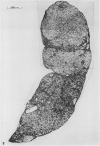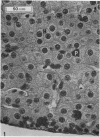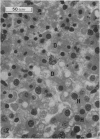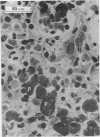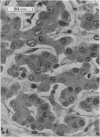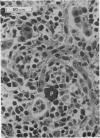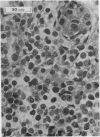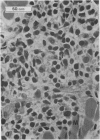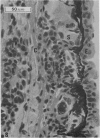Abstract
Single intraperitoneal injections of dimethylnitrosamine (DMN) in concentrations of up to 16 mg/g body weight, failed to have any lethal effect in newts. This treatment also failed to induce tumours in newts maintained for one year after injection.
Six or 7 injections of 16 mg/g body weight of DMN, administered over a period of 3-4 weeks, gave rise to a short-term lethal effect due to liver necrosis and in the long term to liver tumours. The tumours induced were of similar type to nitrosamineinduced tumours in rats, one being an anaplastic liver tumour and the other nodular hepatic cell tumours.
Attempts to maintain the tumours by grafting failed, probably due to homograft rejection.
Full text
PDF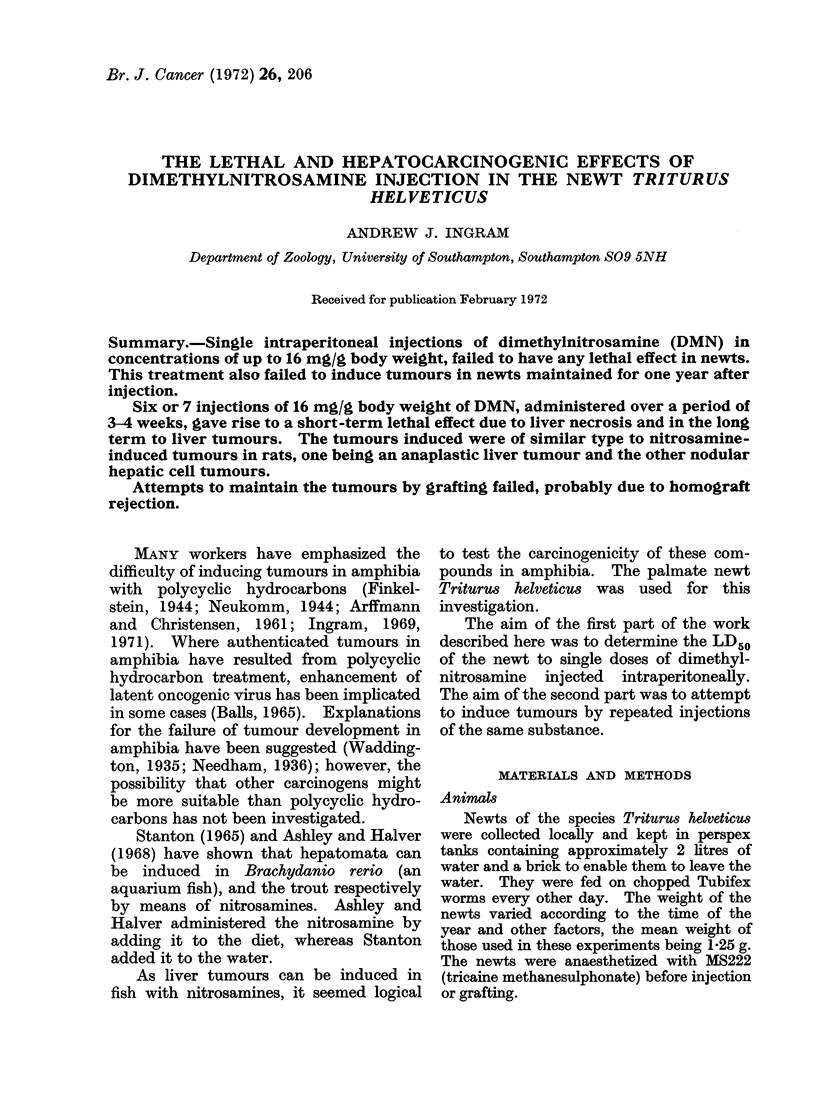
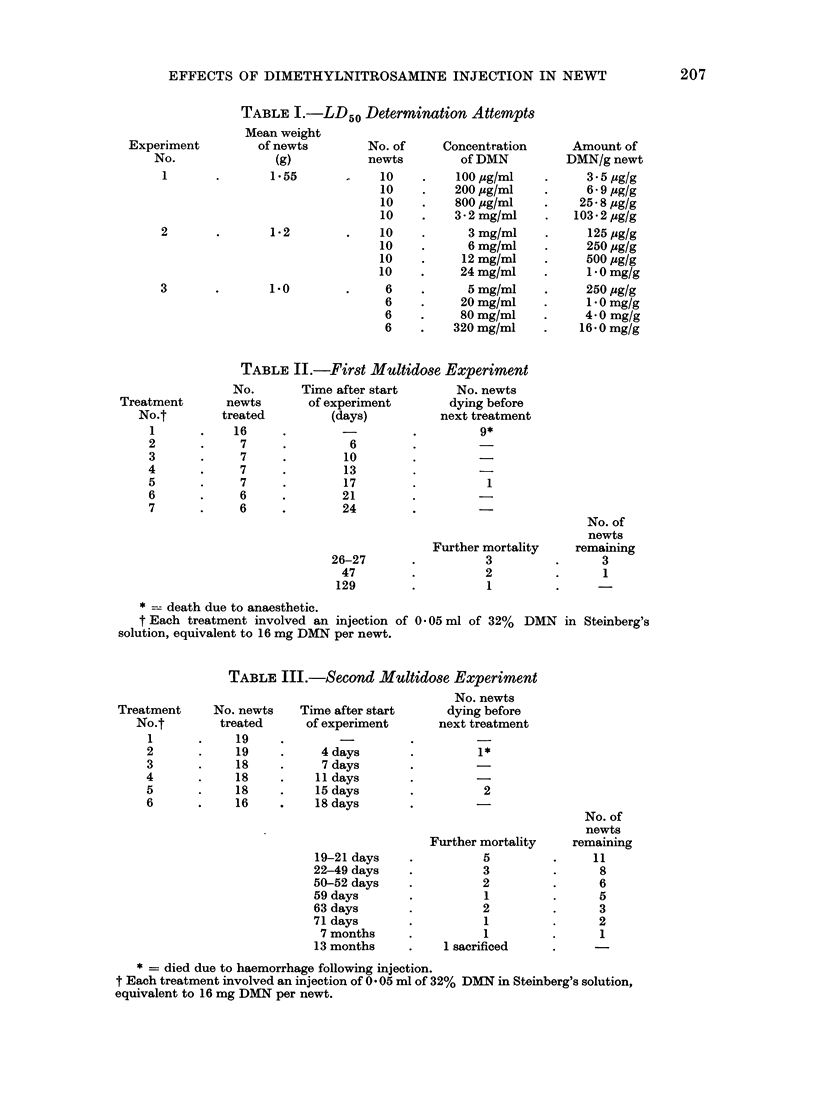


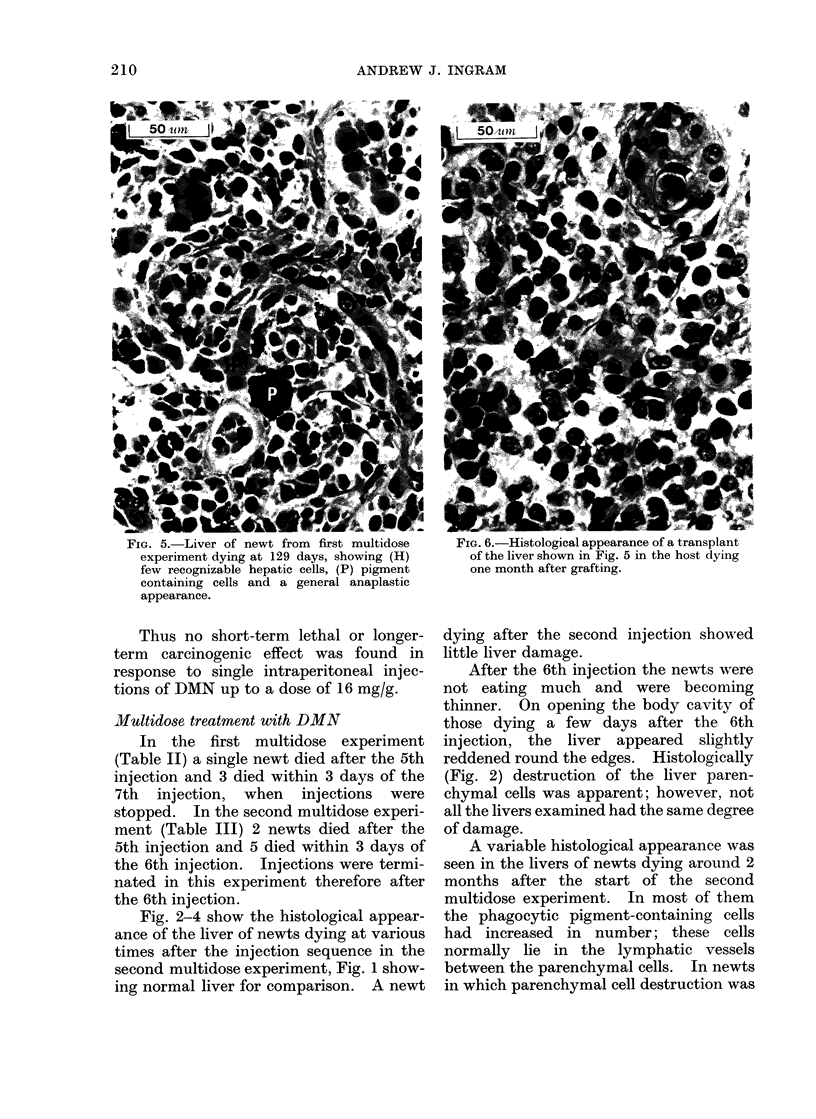
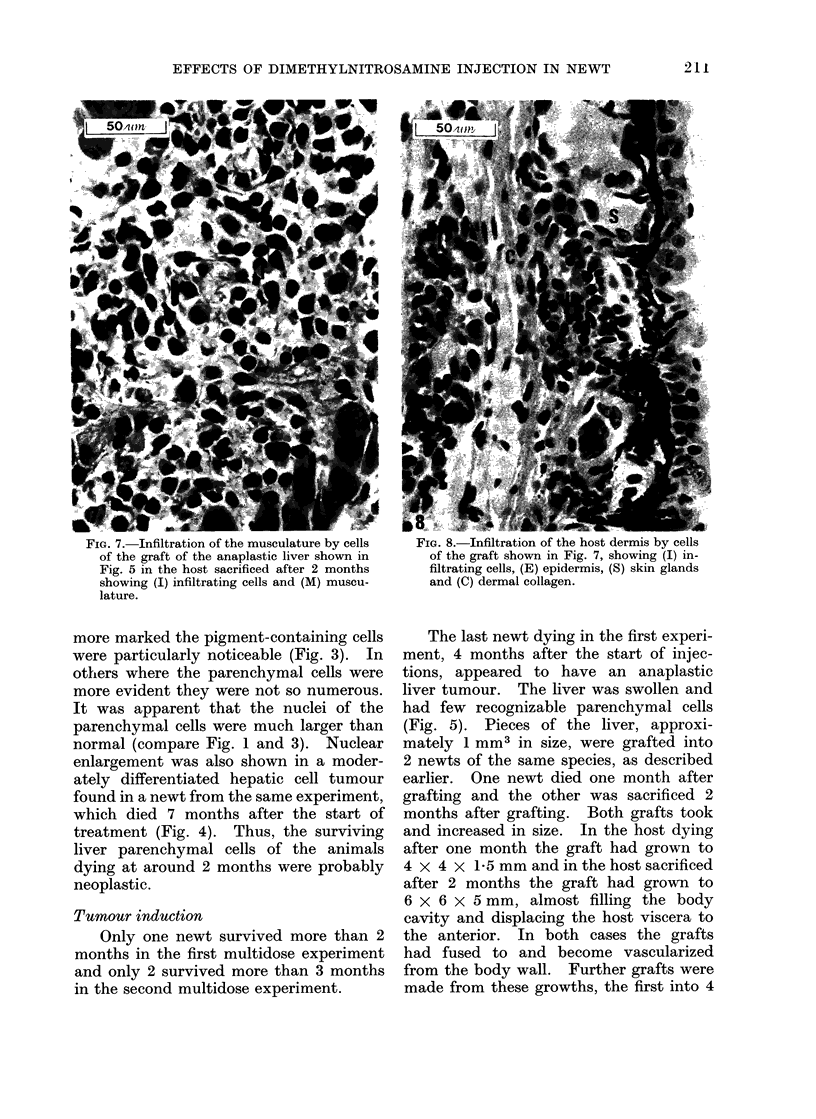
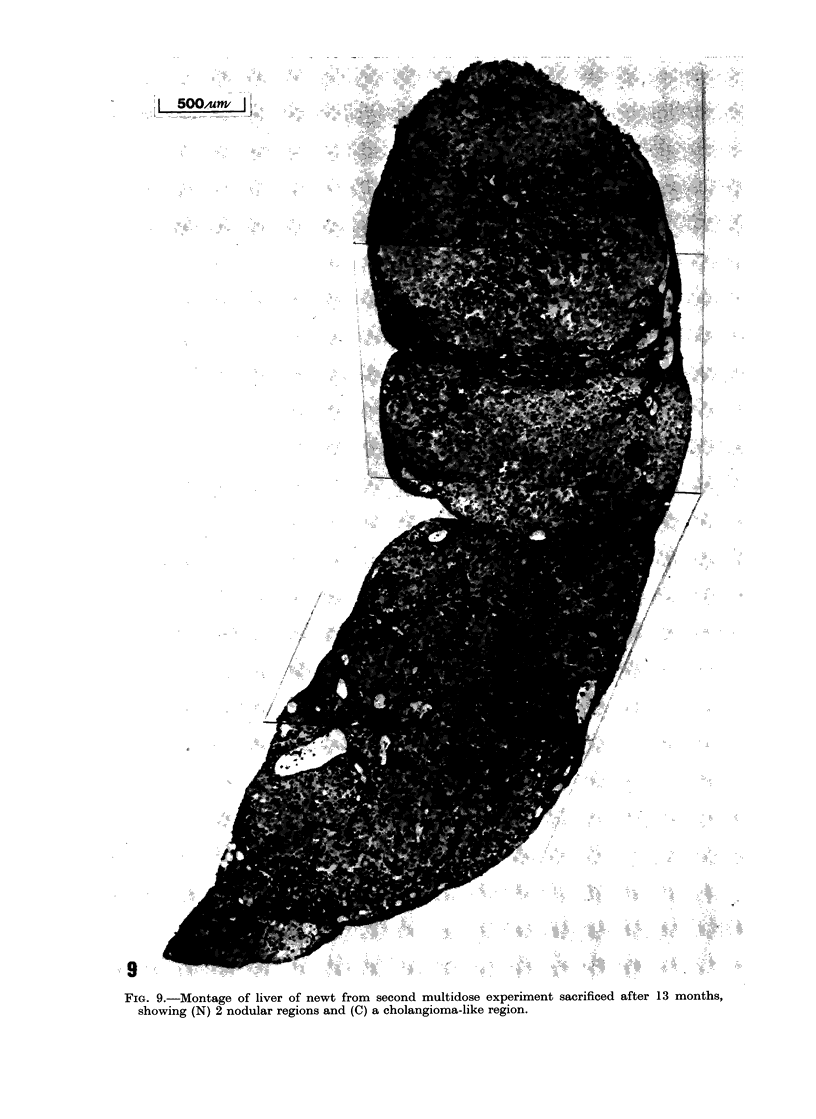
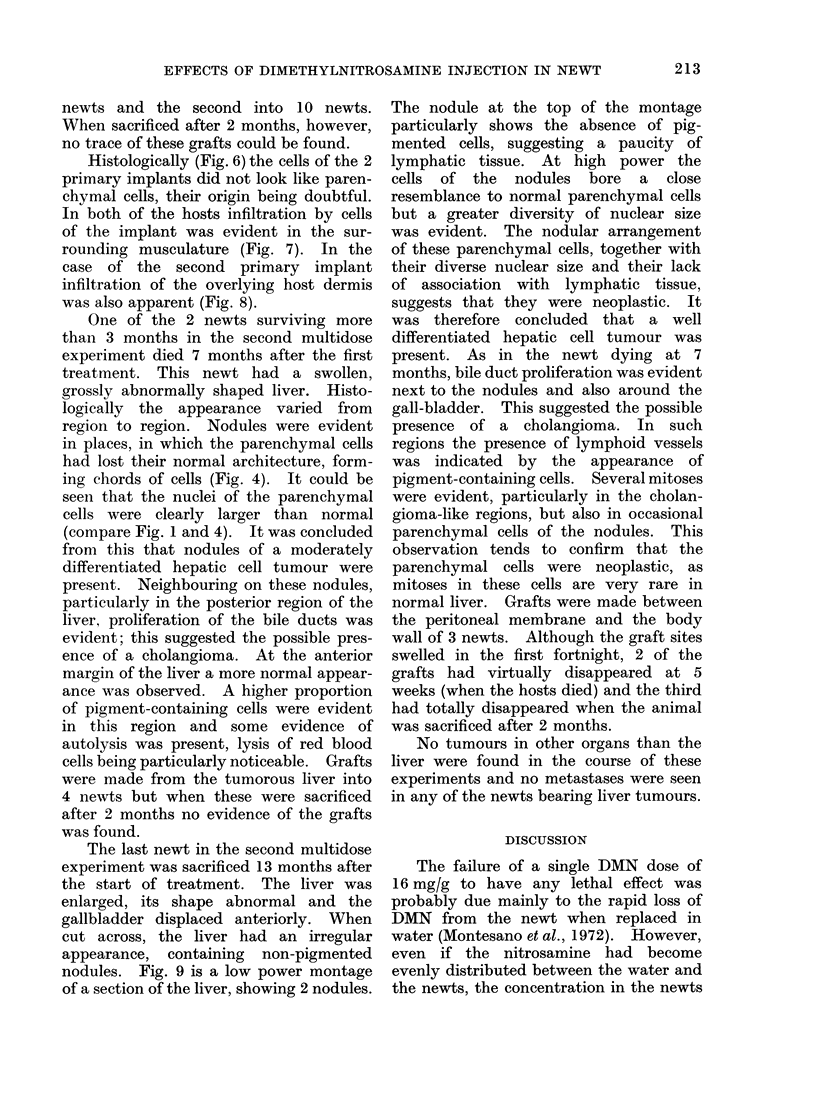
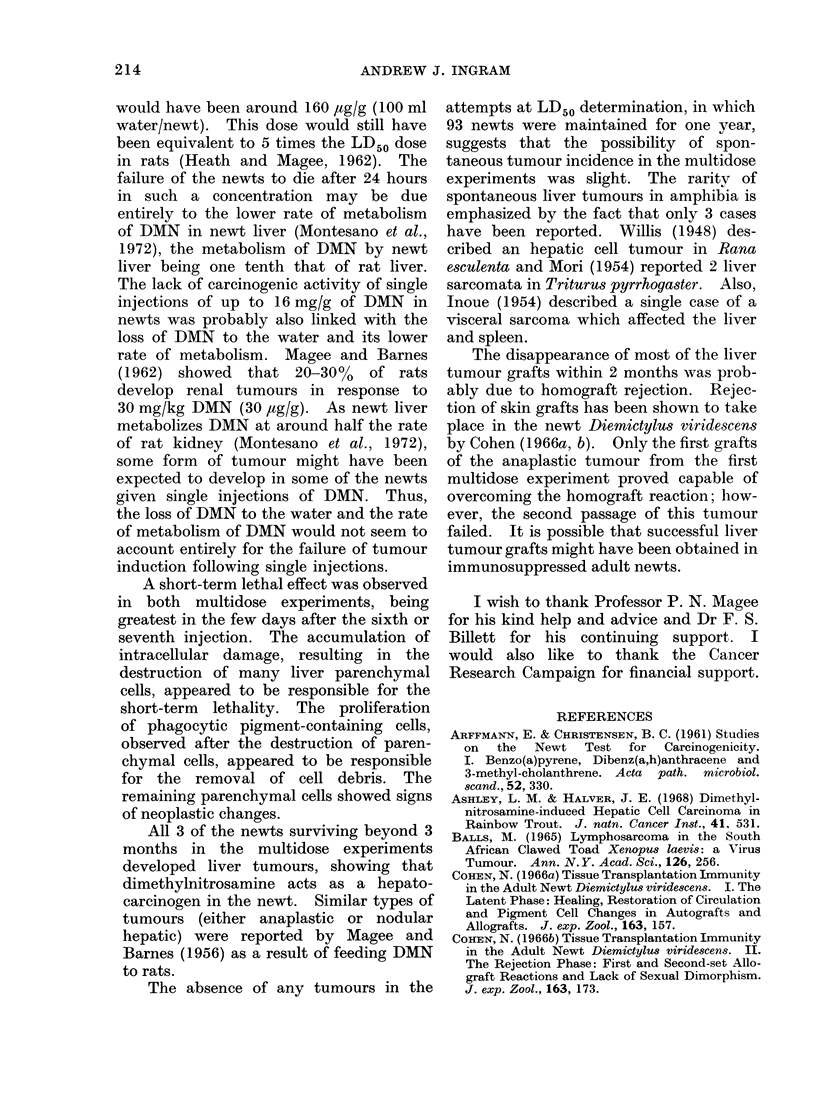
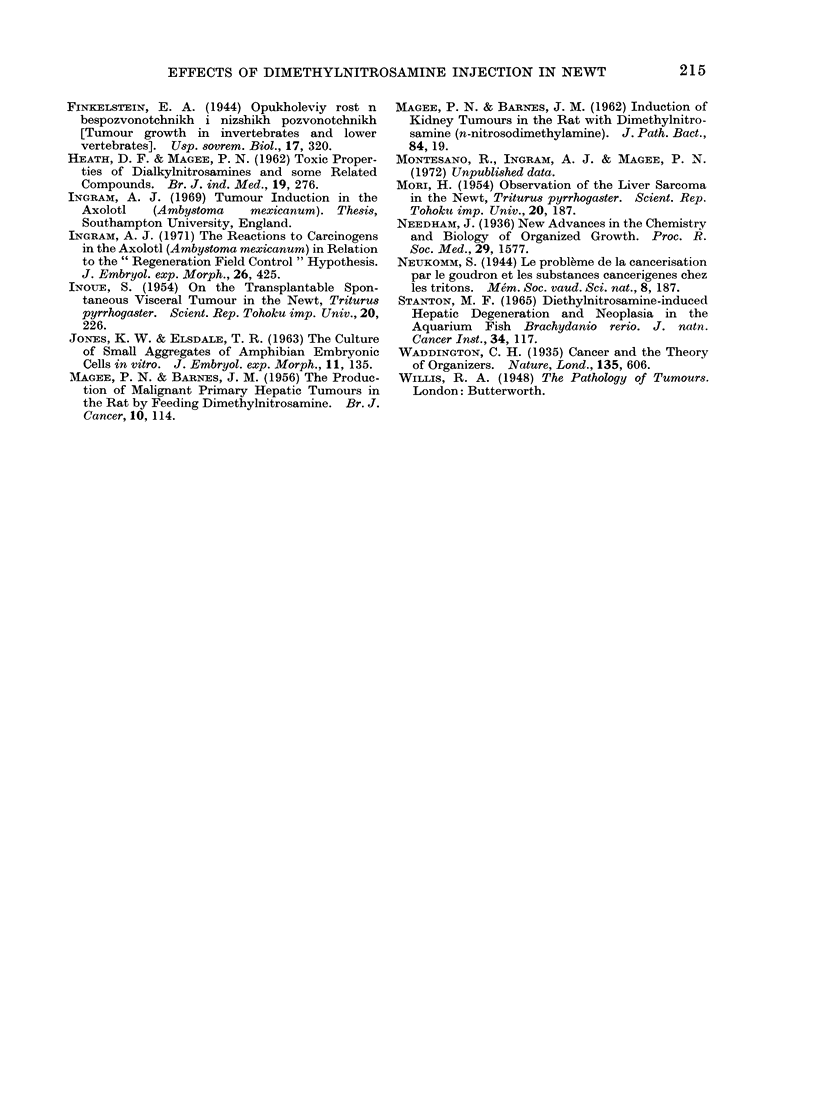
Images in this article
Selected References
These references are in PubMed. This may not be the complete list of references from this article.
- AR FFMANN E., CHRISTENSEN B. C. Studies on the newt test for carcinogenicity. 1. Benzo[a]pyrene, dibenz[a,h] anthracene and 3-methylcholanthrene. Acta Pathol Microbiol Scand. 1961;52:330–342. doi: 10.1111/j.1699-0463.1961.tb03201.x. [DOI] [PubMed] [Google Scholar]
- Ashley L. M., Halver J. E. Dimethylnitrosamine-induced hepatic cell carcinoma in rainbow trout. J Natl Cancer Inst. 1968 Aug;41(2):531–552. [PubMed] [Google Scholar]
- Balls M. Lymphosarcoma in the South African clawed toad, Xenopus laevis: a virus tumor. Ann N Y Acad Sci. 1965 Aug 10;126(1):256–273. doi: 10.1111/j.1749-6632.1965.tb14279.x. [DOI] [PubMed] [Google Scholar]
- Cohen N. Tissue transplantation immunity in the adult newt, Diemictylus viridescens. I. The latent phase: healing, restoration of circulation, and pigment cell changes in autografts and allografts. J Exp Zool. 1966 Nov;163(2):157–171. doi: 10.1002/jez.1401630206. [DOI] [PubMed] [Google Scholar]
- Cohen N. Tissue transplantation immunity in the adult newt, Diemictylus viridescens. II. The rejection phase: first- and second-set allograft reactions and lack of sexual dimorphism. J Exp Zool. 1966 Nov;163(2):173–189. doi: 10.1002/jez.1401630207. [DOI] [PubMed] [Google Scholar]
- Ingram A. J. The reactions to carcinogens in the axolotl (Ambystoma mexicanum) in relation to the "regeneration field control" hypothesis. J Embryol Exp Morphol. 1971 Dec;26(3):425–441. [PubMed] [Google Scholar]
- JONES K. W., ELSDALE T. R. The culture of small aggregates of amphibian embryonic cells in vitro. J Embryol Exp Morphol. 1963 Mar;11:135–154. [PubMed] [Google Scholar]
- MAGEE P. N., BARNES J. M. Induction of kidney tumours in the rat with dimethylnitrosamine (N-nitrosodimethylamine). J Pathol Bacteriol. 1962 Jul;84:19–31. doi: 10.1002/path.1700840103. [DOI] [PubMed] [Google Scholar]
- MAGEE P. N., BARNES J. M. The production of malignant primary hepatic tumours in the rat by feeding dimethylnitrosamine. Br J Cancer. 1956 Mar;10(1):114–122. doi: 10.1038/bjc.1956.15. [DOI] [PMC free article] [PubMed] [Google Scholar]
- STANTON M. F. DIETHYLNITROSAMINE-INDUCED HEPATIC DEGENERATION AND NEOPLASIA IN THE AQUARIUM FISH, BRACHYDANIO RERIO. J Natl Cancer Inst. 1965 Jan;34:117–130. doi: 10.1093/jnci/34.1.117. [DOI] [PubMed] [Google Scholar]



